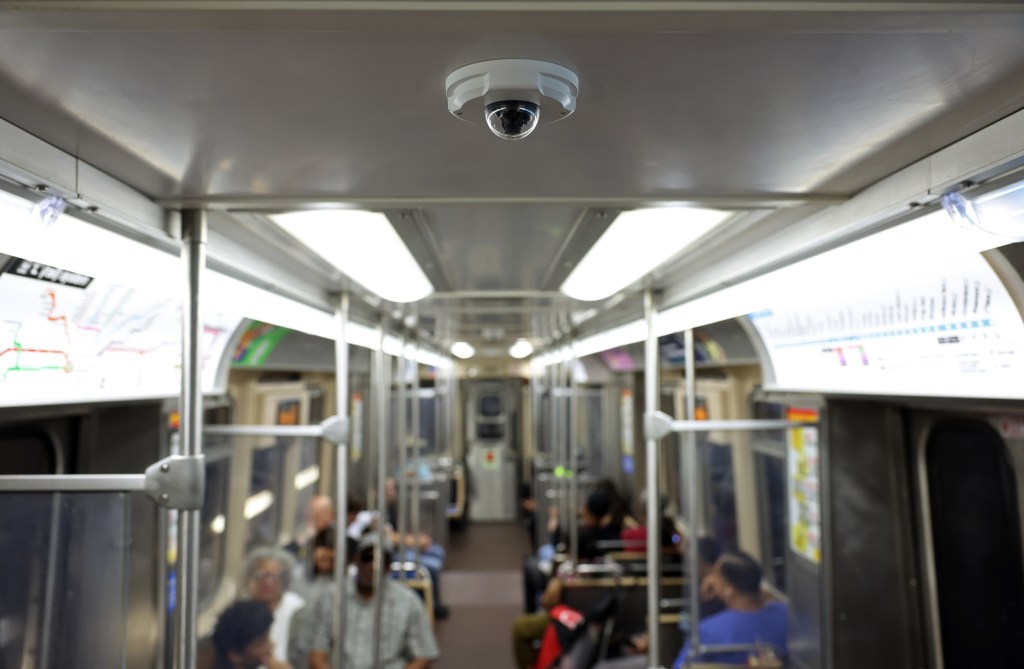CTA Tests AI Technology to Enhance Safety in Transit Stations
In a bid to bolster safety at "L" stations, the Chicago Transit Authority (CTA) has initiated trials of an innovative artificial intelligence technology designed to detect firearms. This cutting-edge system, created by the company ZeroEyes, aims to swiftly identify guns that may be brandished in or around the transit stations.
The ZeroEyes technology functions by analyzing images captured by CTA’s existing surveillance cameras. When a firearm is detected, the information is promptly sent to a ZeroEyes operations center, where trained staff evaluate the image and inform relevant authorities, including local police, CTA officials, and Chicago’s Office of Emergency Management and Communications. Officials assert that alerts can be issued in under a minute, providing critical time for law enforcement to respond effectively.
This test program comes amid rising concerns about safety within the CTA system, as both actual incidents and perceptions of crime have surged in recent years. It reflects a broader trend of implementing advanced technologies to combat public safety challenges. ZeroEyes has previously been deployed in various settings, including public transit systems, schools, and businesses.
However, the implementation of similar technologies has sparked debate. The city has seen controversy surrounding the ShotSpotter gunshot detection system, a technology that utilizes audio sensors to identify outdoor gunfire. Supporters argue that it enhances police response times and assists in delivering urgent care to victims, while critics, including Mayor Brandon Johnson, have decried it as an expensive tool that fosters overpolicing and questioned its effectiveness in reducing crime rates.
Civil rights advocates, such as ACLU Illinois spokesman Ed Yohnka, have called for greater transparency in the deployment of systems like ZeroEyes. They express concern that the introduction of such technologies could lead to increased surveillance and intrusion into citizens’ lives. Yohnka emphasized the need for public dialogue on how these systems should be utilized.
While specific crime statistics related to gun incidents on the CTA were not readily available, the police reported a rise in violent crimes within the transit system, with 626 reported cases in 2023 up from 547 in the previous year. “One gun on the system is too many,” expressed CTA spokeswoman Maddie Kilgannon, emphasizing the agency’s commitment to exploring all avenues for enhancing safety.
As part of its security strategy, the CTA has been augmenting its safety measures over the past few years, investing nearly $65.2 million in security services for 2024, which includes the hiring of unarmed security personnel and K-9 teams.
The ZeroEyes pilot program, which costs $200,000, began approximately a month ago and is set to run until summer 2025. Currently operational on over 250 of the CTA’s 30,000 cameras, the system has already identified both legal firearms carried by law enforcement officers and non-lethal weapons, such as toy guns. Notifications regarding these non-threatening items were relayed to local officials for follow-up.
"One of the reasons I really appreciate ZeroEyes is its inclusion of a human oversight component,” stated Kevin Ryan, the CTA Vice President of Security. He noted that having human reviewers helps ensure that the response is appropriate based on the context of the detected items.
Ryan, who has a background in the Chicago Police Department, highlighted the importance of providing officers with specific information about potential threats: "When responding to a weapons call, officers benefit from having context. Knowing what to expect helps in resource allocation and response strategy."
While the technology has shown promise, other transit agencies, like Philadelphia’s Southeastern Pennsylvania Transportation Authority, experienced challenges with ZeroEyes due to compatibility issues with their monitoring systems, ultimately leading to the cancellation of their pilot program. However, the CTA is optimistic about the performance of its camera systems and anticipates a successful trial.
As the CTA progresses with this technological initiative, officials hope that a successful implementation could pave the way for expanded safety measures within the transit system, ultimately enhancing the security and peace of mind of its passengers.




